Cultural Babywearing – traditional baby carriers
“I wish they had those when my babies were little!”
We modern babywearers often hear this sentiment ridiculously often. I would be surprised to meet a babywearer who hasn’t been told this at least once.
Yet our baby carriers are modeled after cultural babywearing carriers that have been used around the world for centuries!
The period of time in which European and American babies have not been worn, is really a very short gap and we are now returning to something more workable than strollers and bucket seats. We are going back to something simple and functional.
If the theories in this article are correct, we are going back to one of early man’s first and most basic tools! Talk about cultural babywearing!
So while babywearing is not new, it is not something that most of our grandparents had any exposure to. No one did it.
That is changing in a big way, but not enough that babywearing is second nature to us like it would be if we had been worn, had seen mothers all around us wearing, had worn our siblings while our parents worked…our whole lives.
Our generation is reclaiming a practice that, well, it takes some practice. It will be easier for our children, who are already wearing their baby dolls, and some of them are wearing their siblings.
Here is a look at the way some traditional baby carriers are used today, and have been used historically:
Cultural Babywearing: African Babywearing
Many of us have seen pictures of African women carrying babies low on their back in a cloth wrapped around their torsos. But a discussion of cultural babywearing must look across many different cultures in Africa as there are different styles of cloth and different ways of wearing. Here are some:
Maasai people of Kenya and Tanzania
Babywearing with cloth tied over one shoulder and under the other arm, tied with a knot in what we call a Traditional Sling Carry. In Mozambique they use this style for carries on front or back.
Here is a short video showing the simplicity of tying on a Capulana as used in Mozambique:
Adibisi, founder of UK wrap manufacturer Joy and Joe and mother of two, demonstrates the way Yoruba women of her culture back their babies (as they say) in Nigeria:
A grandmother in South Africa shows how she easily wraps her grandbaby up on her back in a towel tucked around her:
Again, in Benin, with a more traditional carrying cloth:
And a little girl in Ghana easily wraps a baby (probably her sibling) the same way, a little astonished at all the attention over something so mundane:
Babywearing Back Carry in Ghana
Cultural Babywearing: Babywearing in the Americas
Inuit mothers wear their babies in their coats where both are kept warm. A special coat called an Amauti is used to securely hold the baby behind mother’s back. Here you can see one demonstrated:
“My grandmas told me that you don’t decide when the child is going to give up the cradleboard, it’s the child that’s going to decide. They say the sooner that a child leaves or pushes away the cradleboard and doesn’t want to use it—that means they’re going to mature a lot faster.” —Maynard WhiteOwl Lavadour
Cradleboards were used not just for wearing, but for keeping baby content in a swaddle and safe as it could be propped near the family or put in a wagon or the side of a horse as well as on a family member’s body as a baby carrier. Ojibwe, Navajo, Apache, Shoshone, Ute, Iroquois, Hopi and Lakota tribes all used some kind of cradle board. The style and use varied between these cultures.
The word “papoose” has mistakenly been used to mean a cradleboard but is actually a word for baby. Among some tribes the term “papoose” has come to be used as a racial slur so it is best not to use the word unless you know the accepted use among those around you.
How to use a cradleboard:
Mayan woman carrying her baby in a beautiful Mexican rebozo.
Here is where you can learn all about how traditional Mexican rebozos are used for babywearing.
As in Africa, the simple piece of cloth has been the predominant theme in traditional American babywearing. It is a legacy we continue when we use either one of these traditional carriers (still very much used by modern Americans) or the new-fangled version, the woven wraps you find in my store!
Here is a video demonstration of how to use a traditional Peruvian Manta to wear a baby on your back Peru-style:
Here a Honduran woman demonstrates how she wears a baby in a cradle carry on her back:
And a foreigner requests a toddlerwearing demonstration from a mama in Guatemala:
Chamacoco mother and baby in Paraguay.
Kogi mother and baby using a traditional baby carrier in Colombia.
Cultural Babywearing: Asian Babywearing
Many of the traditional baby carriers we see from Asia make use of straps:

The traditional Korean baby carrier is a Podegai or Podegi, seen here:
In Japan, mothers would wrap their babies in their Obi sashes similarly to how we use a wrap.
Leslie Kung demonstrates the use of an Obi sash and then also demonstrates how the Obi combined with an Indonesian Selendang (below) can be used as a make-shift Podegai like the one above, but with a narrow width that does not wrap around the parent’s body. This improvising is not traditional except in the sense that women have been using whatever they had to hand for probably as long as there have been babies! Leslie is a modern educator so she is demonstrating both the traditional use and some ideas that parents may want to use today:
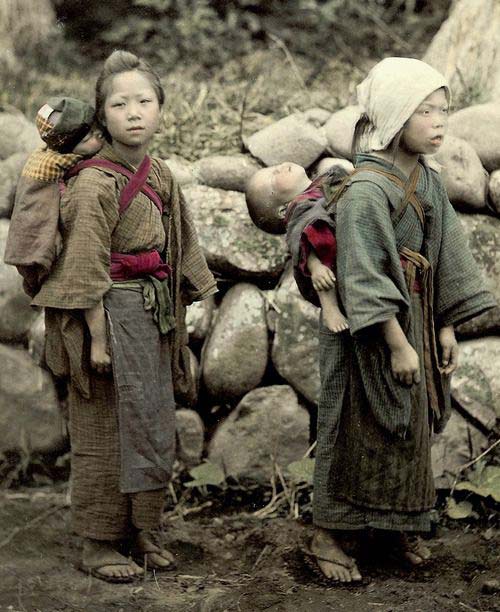
While straps are popular in Asian cultural babywearing, that is not the only way babies have traditionally been carried on the continent. As the simplest form of baby carrier, the simple piece of cloth is one we see most often repeated in countless cultures around the world! There are plenty of examples of piece of cloth Asian carriers, too.
A Selendang is a garment worn by women in Indonesia that is often draped about the head and shoulders and used for carrying personal objects (such as your baby):
Babywearing in Iran circa 1950.
Baby Sling hammock over mom’s shoulder in India.
Basket style carriers have been used widely in Asia as well:
Babywearing Basket in India
Ingorot babywearing basket, Phillipines
Traditional Babywearing in Guizhou, China – one on the back and two in baskets.
Cultural Babywearing: European Babywearing
In Wales, a shawl has traditionally been used to wrap the baby against the mother. The fabric is tucked in around the baby with the baby’s weight holding it in place. Shawls have been similarly used for babywearing in many other European countries as well.
Photo Instructions for how to use a Welsh shawl for babywearing.
The Welsh shawl carry is a style of cultural babywearing has been used across Europe. But other styles of baby carrier have been used as well.
Babywearing in Norway circa 1900
Babywearing with Krippsack or Skinnbog in Sweden, similar to a Hmong style baby carrier from SouthEast Asia.
Baby in Fatle (sling) baby carrier in Scandinavia.
Czech Babywearing Basket
Cultural Babywearing: Oceania
Maori Babywearing in New Zealand
Summary of Traditional Babywearing Across Cultures
There are really SO MANY ways to wear babies and it’s a commonality that we should remember because across this globe we have more in common than we have differences.
There are certainly many cultures and baby carriers I did not touch on here.
But did you see these common babywearing concepts across continents? Baskets, straps, rectangles with straps, pieces of cloth tied over one shoulder or around the torso, even bags and cloth carriers with a forehead straps.
So no, babywearing and baby carriers are not new. They are not exclusive to one culture. And there is not one right way to carry your baby.
So? Carry on. Happy Babywearing. Let me know what you think below!














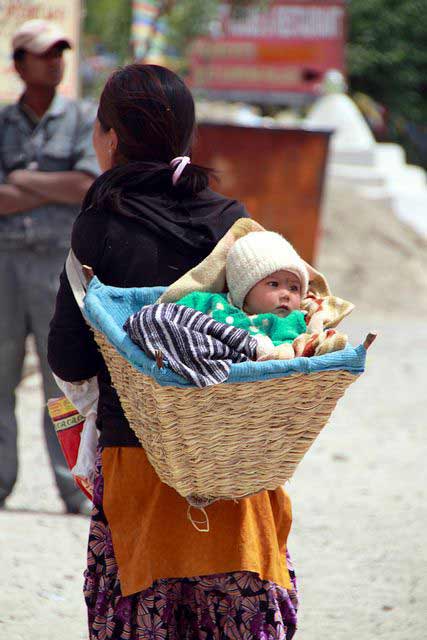
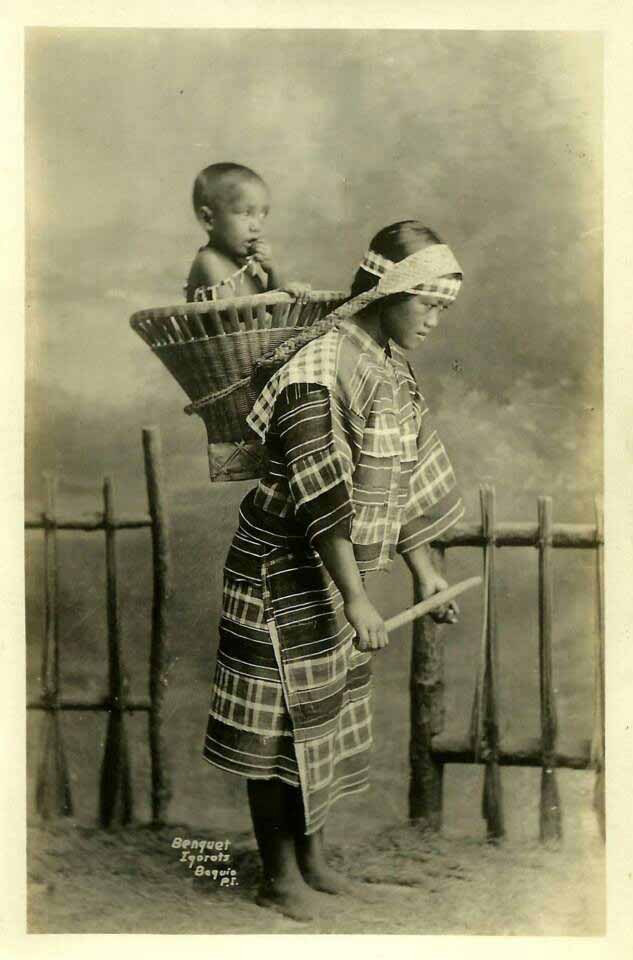
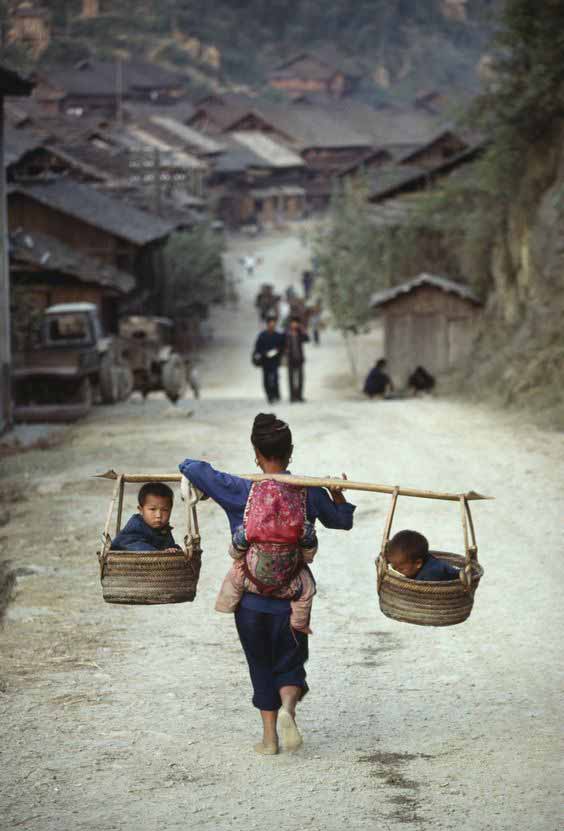
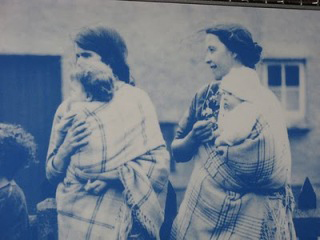




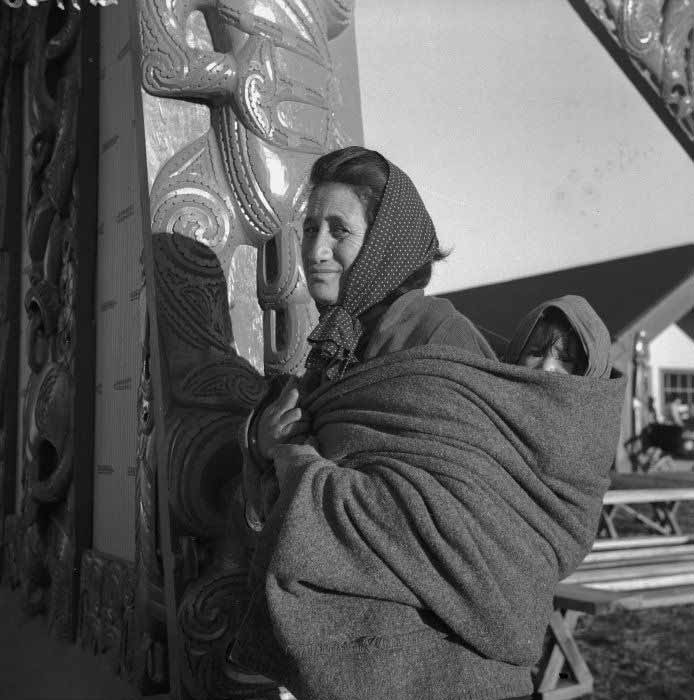
Norashida Abd Rahman February 13, 2013 at 7:14 am
Hi. thats me in the video 🙂 i always amazed with traditional babywearing and this post really great.
Diana February 13, 2013 at 10:29 pm
Which video is yours? Thank you so much for sharing with us!
paz February 14, 2013 at 9:14 pm
great article Diana!! and how funny Norashida found her video! she is the one from the last video 🙂 gotta send u a pic soon of my “double trouble back wrap” soon 😉 i have managed to place the 30+ lb and the 23+ lb toddlers in my back/sides :D!!! great workout if you like hiking like us
Diana February 16, 2013 at 7:48 pm
Please do share!
Claire February 20, 2013 at 10:49 am
Thanks Diana! I am going to show this to my mother who insists that babies in other cultures are not carried once they reach a certain age – my third baby is just over a year old and I think she fears for my back!
Jasbir @jasbeeeray November 1, 2013 at 12:25 pm
I was just about to share that the video of the selendang and share this with the person who made the video. Brilliant post. I too have the same sentiment, It’s amazing how these babywearing has been in place for aeons and only now its surfacing.
rhoda September 9, 2015 at 5:46 am
Hi, nice post on traditional baby wearing – it has been part of a lot of cultures for many years.
Just a correction – you talked bout the Khanga and East Africa but the videos and images you have used are not East African. You have clips from South Africa, Benin and Ghana, none of these are east African countries.
For more information on east African baby wrapping please see below:
http://totheseablog.com/2014/08/how-to-wear-baby-east-african-style-and/
Diana September 9, 2015 at 10:11 am
Thank you for pointing that out, Rhoda. I have looked for a video showing the Kanga used in East Africa and cannot find one that was taken by a person of that culture, so for now I have deleted the Wikipedia quote about the Kanga so as not to be confusing. I enjoyed your blog post very much! I would happily share the pictures of Emmy using the Kanga on this blog, although I expect you prefer that they stay on your site, which is understandable!
Adam December 31, 2015 at 5:14 am
Just a correction,’African women do not wear their babies low on their all the time.They also tie around their shoulders and wear their babies on their upper backs so that the baby can look over their shoulders. But some African women with big booty prefer their baby low on their backs so that they can rest/sit on the booty.
Diana January 4, 2016 at 5:44 pm
Thank you for the additional information, Adam!
Obibini Bruni April 4, 2018 at 9:50 am
The photos and videos have disappeared. Any chance you can put the links so we can check them out?
DianaR April 4, 2018 at 11:31 pm
Many of my pages were ruined when Photobucket broke the internet last year but your comment just put this page at the top of the list and I’ve started finding and uploading the pictures and videos so many of them are there now, and I hope to finish it tomorrow! Enjoy!
Chiedu October 3, 2018 at 5:03 pm
Excellent work you are doing here. I absolutely love one of your pictures and wish I could draw or paint it.
Babywearing for Beginners - Benefits and Types - All You Need to Know October 20, 2018 at 6:28 am
[…] have developed an astounding array of techniques for wearing their babies. Photos of these diverse carriers prove that the only thing that remains constant from region to region is that parents make good use […]
A Balancing Act: Babywearing and Gender Equality – mamaatbp December 14, 2018 at 9:11 pm
[…] Today, caregivers have a lot of babywearing options to choose from, most of which are made from textiles such as cotton, bamboo, and/or linen. It can be as simple as a long piece of woven wrap or sophisticated as a soft-structured buckle carrier with little pockets. Long before the modern branded carriers came, babies were worn using pieces of cloth found at home. Towels and blankets came in handy. In traditional societies, babies were even worn using cradles and baskets! […]
Sarah Alday January 11, 2019 at 6:48 am
Wonderful Thankyou all so very much! Our sweet baby is 9 Months now, he has sometimes been worn in our carrier on walks, which he has so enjoyed , and occasionally around the house though I do wish I had carried him more already at times , he can get frustrated being in his carrier (I am going to try a new one soon as he has grown so much recently that I do not feel safely about putting him in the same carrier. I will say that sometimes I have tried painting as an artist with a carrier can be difficult. I know this time with myself is important too but I know that all moms know the feeling that they could spend all their time with their babies as they will be grown one day! So finding a balance is a project! I consider carrying him more even as he is nine months now as certainly half the obstacle is having arms to be able to do things-so I have to put him down or in his crib, pack and play, or playpen, I truly hope and know we will always have our sweetest bond!
DianaR January 16, 2019 at 12:54 pm
So true, Sarah! If you have not worn him in a back carry, I suggest trying a back carry in one of my woven wraps. Older babies and toddlers love the view and it’s the most comfortable and convenient, especially for a mom who wants to use her arms for painting or anything else 🙂
Kseniya January 23, 2019 at 3:11 pm
Hello, Could you please tell me if these are your photos? I’m painter and want to draw one of these photos, where can I ask permission to use this photo?
DianaR January 23, 2019 at 11:10 pm
I’m sorry, Kseniya. I do not know who owns these photos.
Courtney Poppy April 30, 2019 at 1:19 pm
Thank you SO much for this! I appreciate you hard work on this article
DianaR May 1, 2019 at 10:23 am
Aw, thanks, Courtney! I appreciate all the women making videos and sharing knowledge. Truly standing on the shoulders of giants. Mothers amaze me! -Diana
Victoria December 24, 2019 at 10:29 pm
This post is absolutely incredible. The most comprehensive I’ve seen on babywearing. No need to spend $200 on a carrier if you have a rectangle of cloth! Thank you so much.
DianaR December 29, 2019 at 2:20 pm
I’m so glad you like it. Aren’t moms amazing???
Franziska June 17, 2020 at 1:37 am
Thank you for this article! So inspiring!
Nora July 1, 2020 at 11:29 am
I am so glad i stumbled on this post. I am very new into parenting and I’m looking for information to learn parenting stuff like baby wearing, baby sleep and diapering.
DianaR July 7, 2020 at 10:55 am
Welcome to my blog, Nora. I’m glad you found me 🙂
Lexi August 20, 2020 at 3:27 am
Love seeing all the cultures represented in this and it’s definitely a great resource. Thank you for putting it together! I’ll definitely be sharing on my doula page
DianaR August 20, 2020 at 10:32 am
I’m glad you liked it. I think it’s so valuable for us to know how we are connected to all the moms everywhere 🙂
Sylvia Lim August 30, 2020 at 11:50 am
Appreciate this amazing post. ❤️
Morgan Mendoza May 27, 2021 at 5:15 am
Baby wearing will help you finish your work and spend time with your baby as well! Such a saviour
https://tinytwig.in/
Ana June 8, 2022 at 8:32 pm
This post is so helpful and has motivated me to begin to practice this with my fifth little one.
Here are two more videos I found very helpful as a beginner:
Carry your Baby on Back African Style easily, with a piece of cloth!
https://youtu.be/bqecBdIePmM
Back carrying – Kenyan method
https://youtu.be/YBM8xX6OoAU
My seven year old was very interested in the videos of the older sisters carrying the baby of the family. It would be nice to see more of those too. I wonder when/what age they start.
DianaR June 16, 2022 at 12:08 am
Thank you for sharing additional videos, Ana! I love the children getting involved.
look After Babies June 19, 2022 at 2:04 am
That was amazing post.It helped me a lot.keep it up.
The Native American Way Of Preventing SIDS – TheEcoBaby November 25, 2022 at 9:21 am
[…] the fact that there were numerous variations on traditional baby carriers in native North American cultures, the cradleboard was by far the most common. A cradleboard’s […]
Natasha Chetty March 15, 2023 at 12:55 pm
In Zambia, we wrap the baby in a traditional cloth or whats called called a chitenge, with one side of the cloth over the shoulder and the other side underneath our armpit tied to the front in a knot. This way, we can easily slid the baby from the back, to the side and to the front using the side thats underneath the shoulder. The baby is also hidden when breastfeeding in the front (with the side that goes over the shoulder). And we can also cover the babies head to avoid distractions (with the side that goes over the shoulder). I carried my son like this for three years with the same chitenge until he became too big for his small mummy to carry. Baby wearing is an old tradition that keeps baby safe, holds baby close and frees moms hands. Thank you for this beautiful well researched informative article.
DianaR March 19, 2023 at 6:09 pm
Thank YOU for chiming in with your personal experience, Natasha. That sounds absolutely perfect and ideal for mother and baby to make life easier and to stay connected!
Kemeera June 6, 2025 at 8:22 am
I love your page so much! There is a video I’m looking for- I thought it was here. It’s a compilation of photos from around the world showing traditional babywearing. It looks like many of the ones shown here. Classical music was playing over it. Do you happen to know what I’m referring to and where I can find the video?
DianaR July 2, 2025 at 2:25 pm
I’m happy to know you’re enjoying my website! I don’t think I removed anything like that from this page, but I certainly may have made or shared such a video on social media at some point. My most often shared image that matches this page is this one on my FB page: https://www.facebook.com/photo/?fbid=2103043016377429&set=a.128382603843490 Sorry I don’t have a lead for you on the specific video!